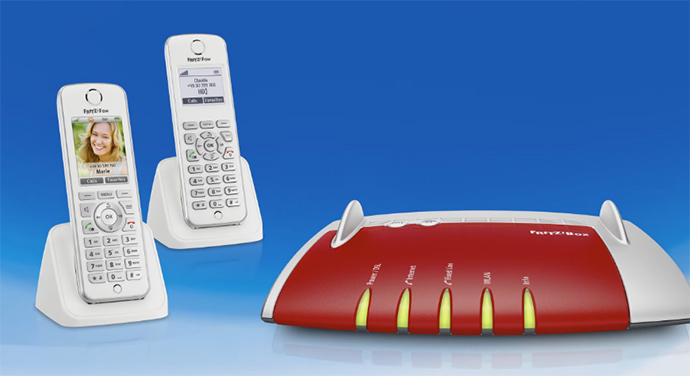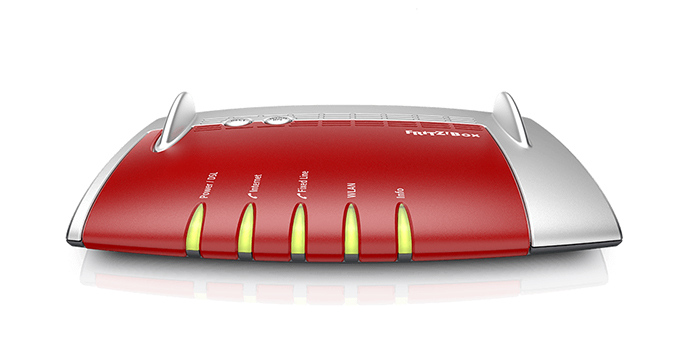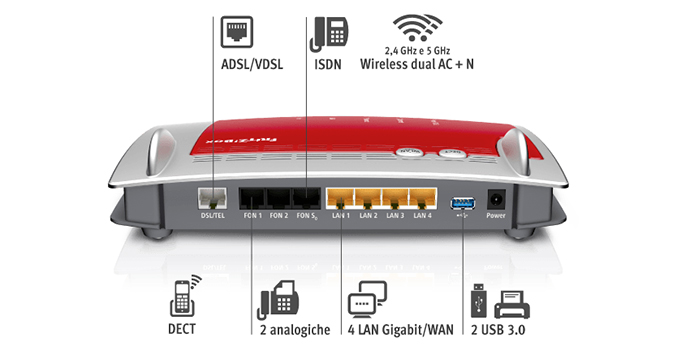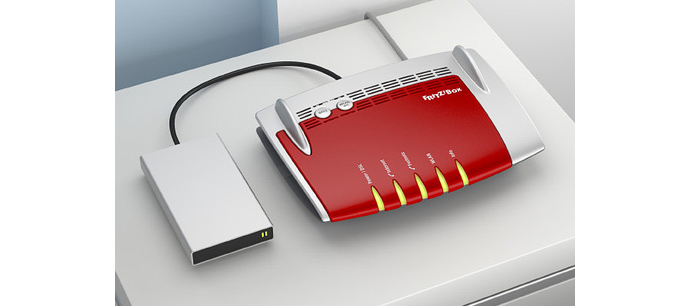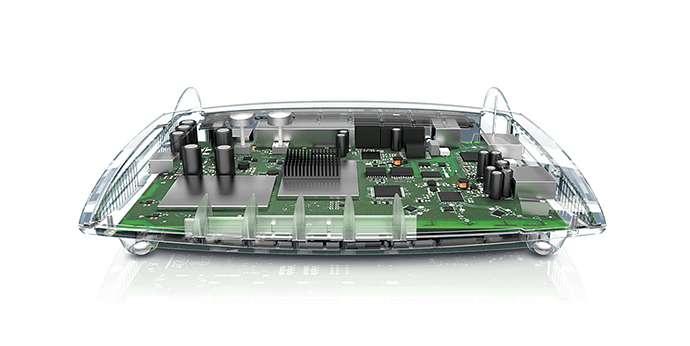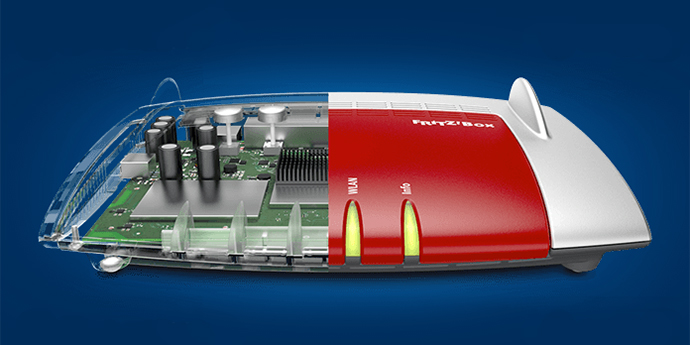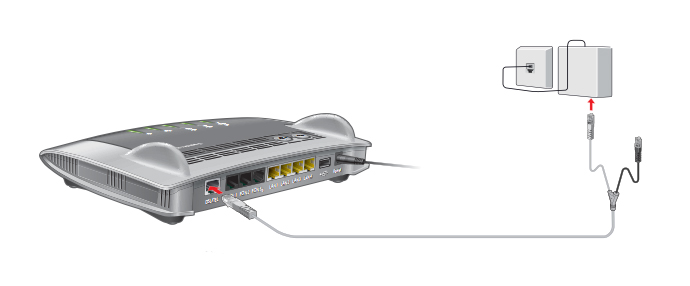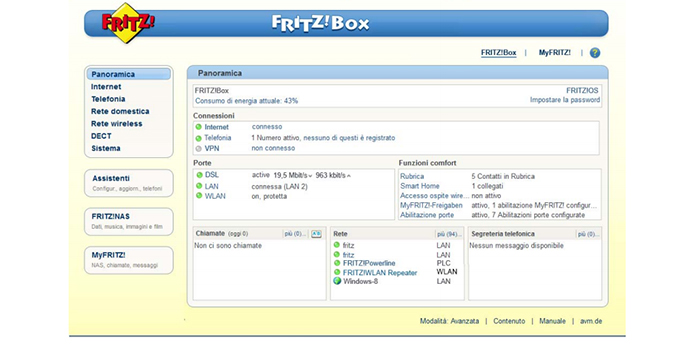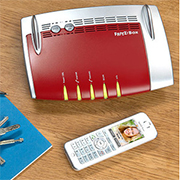The AVM FRITZ!Box 7490 is a 802.11ac VDSL modem router created by the AVM GmbH, a very popular company in Germany and with its networking products being in high demand in the entire Europe, but not as much in the USA.
And this is a shame, since the FRITZ!Box router modems usually come packed with an incredible number of features. Besides the modem routers, the AVM products include DSL cards, ISDN cards and other networking products, but, as expected, what made the company known was the FRITZ! brand, which includes the aforementioned FRITZ!Box (DSL, LTE, cable and FFTH), the FRITZ!Fon (services for the FRITZ!Box), FRITZ!WLAN (range extenders), FRITZ!Powerline, FRITZ!Card and FRITZ!Apps.
Similarly to its predecessor, the FRITZ!Box 7390, the 7490 has a built-in DECT phone base station (for up to six cordless telephones, ISDN or IP based telephones), it acts as an answering machine and can redirect or block calls. So, besides being an AC1750 router and an ADSL/VDSL modem, it’s also a very handy telecommunication device. All these features make the FRITZ! Box 7490 perfect for small businesses and since we saw that it has almost everything one would think to implement into a modem router, let’s see how it performs.
Design
The AVM FRITZ!Box 7490 doesn’t quite look like the other routers on the market and I don’t mean that it adopted a new, elegant design choice, I mean that it looks a bit cheap. The top is red and gray, with a matte finish, several airflow vents and two fin-like plastic protrusions towards the back. The top and the bottom parts of the case extend a bit further than the middle part, delivering the impression of a closed leather book cover.
The fact that it doesn’t have any exterior antennas comes in handy as you can easily mount in on the wall and connect all the necessary cable on the bottom (a luxury that some better-priced routers don’t possess). Sure, if used in an office, then the wall-mounting option is the best one, but if you use it in your home, you can definitely lay it flat on your desk. It’s dimensions are 9.6 x 6.9 x 2.1 inches and it weighs 17.6 ounces, so it has a rather large footprint, meaning that along with the four bottom feet, it shouldn’t budge when there are lots of cables connected.
Turning the modem upside down will reveal a dark gray plastic surface, with lots of vent holes, the aforementioned four feet, two mounting holes and a white label on the middle containing information about the modem router (the SSID, the WAP2, the password, the Nr and the Series-Nr).
Switching back to the top side, we can see that towards the elongated front edge, there are five big LED lights responsible for Power LED (if it flashes, it means that the connection to the DSL is either being established or is interrupted), Internet (if it’s flashing, it means that there are messages in your mailbox; you need this function to be activated by your telephony provider), Fixed Line (if the LED is on, then the telephone connection to the landline network is active), WLAN (the LED flashes in the following scenarios: when switching the wireless LAN ON or OFF, when it’s adopting the wireless LAN settings or when the WPS procedure is aborted) and Info (if it’s on, it means that there’s an event in the user interface found by navigating to System > Buttons & LEDs > Info Display; it also could mean that the Stick and Surf procedure from AVM is concluded).
Remaining on the top side, in between the airflow vents, there are two buttons, DECT (which allows you to register cordless telephones) and WLAN WPS (short press to toggle the WiFi, long press to toggle the WPS). I have no idea why AVM decided to go with the combined WLAN WPS functionality, as more than once I activated one instead of the other.
The back of the FRITZ! Box 7490 is home to a DSL/TEL port (ADSL2+ and VDSL), FON 1 and FON 2 (RJ11 ports for analogue telephones), FON S0 (RJ45 port for ISDN telephones or for PBXs phone systems), four Ethernet LAN ports (you will have to sacrifice one LAN port to use it as a WAN port), a USB 3.0 port and a Power port. On the left side of the modem router, you can find the second USB 3.0 port. The right side is home to another FON 1 and FON 2 analogue connections.
Overall, the case has all the ports and features you would need, so no complaints there, but I’m not really convinced about the spaceship from ‘the Jetsons’ appearance. Since beauty is in the eye of the beholder, maybe some may enjoy its odd retro design.
Note: Inside the package you get the FRITZ!Box 7490 modem router unit, the power supply, a 13-foot DSL/telephone cable, an Installation Guide and a 5-foot LAN cable.
Hardware
The AVM FRITZ!Box 7490 is equipped with a dual-core PSB 80920 EL chipset (clocked at 600 MHz), backed by 512 MB of RAM (2x E1108AJBG-8E) and 8192KB + 524,288KB flash storage memory (25L8035EM2I-10G MXIC + MACRONIX 29F4G08ABADA-WP). The modem side is equipped with a Lantiq XWAY v1.1 PSB 80190 chipset.
The 2.4GHz wireless band performance is being delivered by a Qualcomm-QCA9558-AT4A 3×3 MIMO and the 5GHz wireless radio band (the 801.11ac standard) is being delivered by a Qualcomm-QCA9880 AR1A 3×3 MIMO. All these translates into a maximum wireless performance of 1,3 Gbps using the 802.11ac standard and 450 Mbps using the 802.11n standard.
Considering the fact that the AVM FRITZ! Box 7490 is an ADSL2+ and a VDSL2 modem router, then you can expect speeds of up to 100 Mbps both downstream and upstream.
YOU CAN ALSO CHECK OUT THE BEST DOCSIS 3.0 CABLE MODEMS
Performance and Connectivity
As said at the beginning, the AVM FRITZ! Box 7490 has an integrated DECT base station (Digital Enhanced Cordless Telecommunications) which is used to create cordless phone systems (a great addition for small offices), but its functionality doesn’t stop here, it can also be used with voice applications, such as audio surveillance or baby monitors. The DECT ECO is a clever feature that switches off the transmitting power when the cordless telephones are in Stand By mode, but at the same time, you will still be able to receive phone calls, because the connection will not be lost.
Additionally, you can connect ISDN telephones, analogue phones, answering machines (there are five integrated answering machines that feature the voice-to-mail functionality) and faxes (which include the e-mail forwarding option).
Besides being a complete telephony system, the AVM FRITZ! Box 7490 is also a complete router and modem, but, unfortunately, it does not have the Beamforming technology that we saw used on the Netgear Nighthawk D7000 or on the TP-Link Archer D9. This technology is beneficial because instead of broadcasting the signal everywhere, the modem router focuses the signal directly to the connected clients, so you get better overall speeds.
Now, in order to test the wireless performance of the modem router, I connected a high-end MacBook Pro which features a 3×3 WiFi adapter and got the following results: using the 5GHz radio band and the 802.11ac standard, I measured a maximum of 347Mbps at close range (no more than 5 feet). After increasing the distance to 30 feet, the speed decreased to 265Mbps. Furthermore, at 50 feet, I measured an average of 135Mbps.
Afterwards, I switched to the 802.11n standard, but maintained the 5GHz frequency. At 5 feet, the AVM FRITZ! Box 7490 delivered a maximum of 226Mbps, at 30 feet, the speed decreased to 211Mbps and at long range (50 feet), the modem router delivered an average of 95Mbps.
Next, I used the 2.4GHz radio band (and, implicitly, the 802.11n standard) and, at close range (around 5 feet), I measured up to 115Mbps. After I increased the distance to 30 feet, the speed decreased to 98Mbps. At 100 feet, the AVM FRITZ! Box 7490 delivered a maximum of 55Mbps.
In order to test the NAS capabilities of the FRITZ! Box 7490, I connected an external HDD using a USB 3.0 port and I wrote and read a 1GB folder, which contained multimedia files (videos, music, documents). So, the reading speed of the folder was 7.22MBps and the writing speed was 5.98MBps.
It’s clear that the NAS performance is poor comparing to other routers from the same league. Furthermore, the wireless speed performance is acceptable, but not the best and the only thing that justifies the price tag it is all these added functions that no other modem router from the competition can rival.
Setup
If you have a DSL line, the first thing you need to do is connect the DSL cable to the DSL/TEL port on the modem router and then connect the cable to the DSL splitter (if your network is IP-based, then connect the cable directly to the DSL/VDSL socket).
Next, you need to open a browser of your choice and enter the IP address of the device or go to https://fritz.box. Afterwards, the wizard for the first configuration will appear, so you can set up the language, region and time zone and create an admin password. After the welcome screen, click next and choose your Internet Service Provider (ISP), enter the user name and password and wait a few minutes until the configuration wizard is done. Afterwards, you can log into the main interface.
The interface has a horizontal top menu with four tabs: FRITZ!Box, FRITZ!NAS, MyFRITZ! and Info. On the left there is a vertical menu divided into four sections. The first section features the following options: Overview, Internet, Telephony, Home Network, WLAN, DECT, Diagnostics and System. The next three sections are for the Wizards, the FRITZ!NAS and MyFRITZ!.
The Overview sub-tab shows you the Current power consumption, allows you to set the password, shows you the Connections (IPv4, IPv6, Telephony and Online Storage), the Interfaces (DSL, LAN, WLAN, DECT and USB), the Convenience Features (how many contacts are in the Telephone book, Smart home connections, if the Port forwarding is enabled, if the Parental Control is enabled, the used Storage and so on), the Calls, the Network and if there are messages into the Answering Machine.
The Internet sub-tab has the following tabs: the Online Monitor (Online Meter and Online Monitor), Account information (Internet Connection, IPv6, LISP and DNS Server), Filters (Parental Controls, Access Profiles, Prioritization and Lists), Permit Access (Port Forwarding and FRITZ!Box Services), MyFRITZ! (create a new account or register the FRITZ!Box at an existing account) and DSL Information (Overview, DSL, Spectrum, Statistics, Line Settings and Feedback).
The Telephony sub-tab features the following options: Calls (Call List and Click to Dial), Answering Machine, Telephone Book, Alarm (set up alarms), Fax, Call Heading, Telephony Devices and Telephone Numbers.
The Home Network sub-tab features the following options: Network (Devices and Users, Network Settings – Guest Access, LAN Settings, Access Settings in the Home Network, IP Addresses, Static Routing Table, Time Synchronization), USB Devices, Storage (NAS), Media Server (Settings – enable the Media server and select which Media Sources should be made available; Web Radio and Podcast), FRITZ!Box Name and Smart Home.
The WLAN sub-tab features the following options: Radio Network (SSID and MAC address of the frequency bands), Radio Channel (Radio Channel Settings and the Wireless Environment, which shows the number of wireless radio networks), Security (the Encryption and the WPS Quick Connection), Schedule, Guest Access and Repeater (choose the Operating Mode – either Access point or Repeater).
The DECT sub-tab has two options, the Base Station (you can enable the DECT, register cordless telephones using the PIN number, setup the Radio Field Strength and the Security) and the WEB Services. The Diagnostics sub-tab also has two options, the Function and the Security.
The System sub-tab features the following options: Event Log, Energy Monitor (shows the Power Consumption and gives access to the Statistics), Push Service, Buttons and LEDs, FRITZ!Box users, Backup, Update and Region and Language.
Conclusion
Overall, the AVM FRITZ!Box 7490 is definitely not the fastest modem router, but it has the most features, it comes equipped with a DECT base station, it supports both the ADSL2+ and the VDSL2 technologies and it has an easy to navigate interface. Sure, the design may not be on everyone’s taste, but if it ticks all the boxes in terms of features, then this is definitely the best modem router of its kind.

Mark is a graduate in Computer Science, having gathered valuable experience over the years working in IT as a programmer. Mark is also the main tech writer for MBReviews.com, covering not only his passion, the networking devices, but also other cool electronic gadgets that you may find useful for your every day life.

